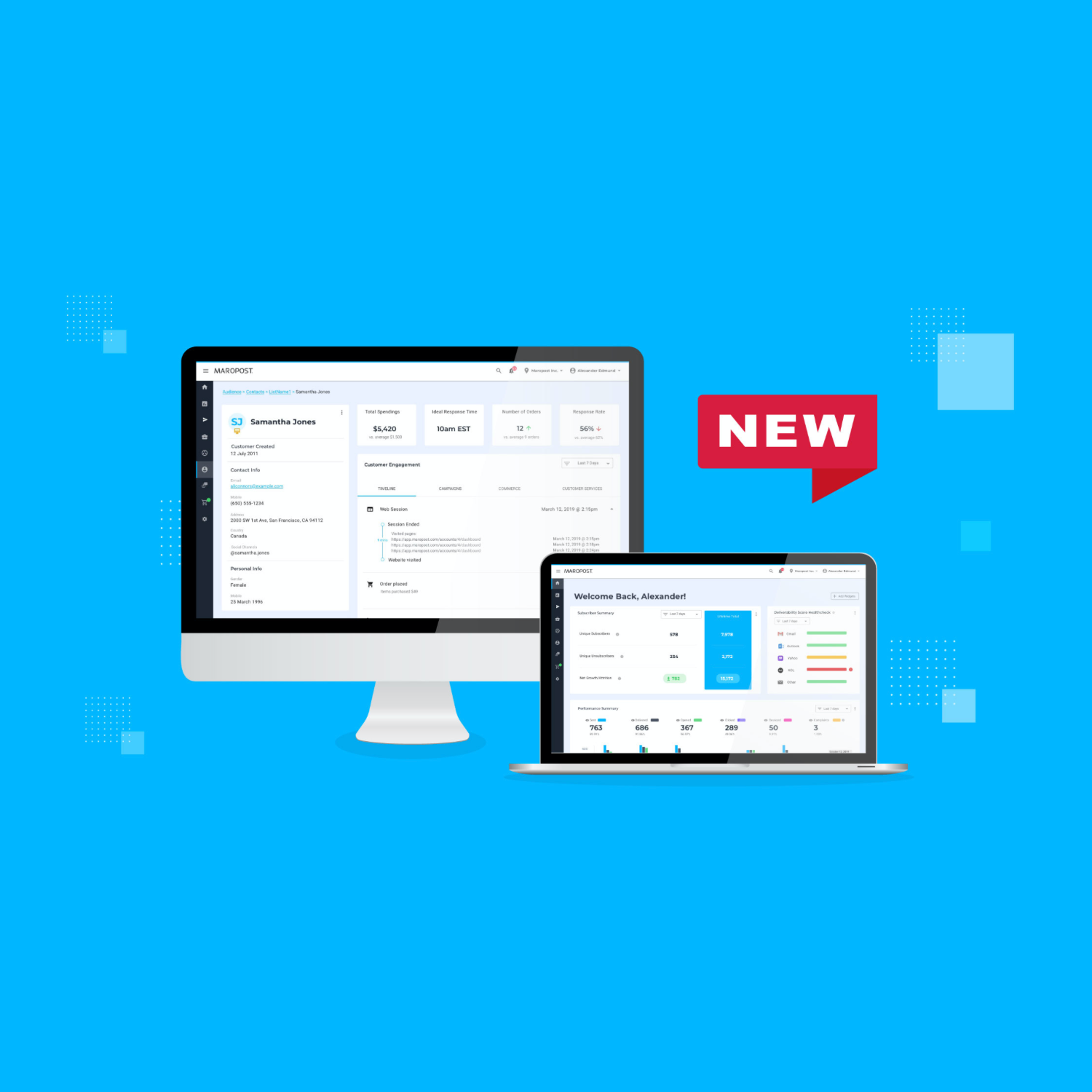Spearheaded implementation of the UX research practice into the organization to empower teams with evidence and data to make business decisions.
Background
When it comes to research many companies tend to either skip this step or to do it very lightly as an after thought. But any UX Design professional knows that this is one of the most crucial steps in the design process.
Goal of the initiative: provide teams with tools and resources that empower them to consult our users on the ongoing basis. In short, allow Maropost teams to listen to the voice of the customer so we can build better products.
Put the spotlight on the users
When it comes to research techniques there are many approaches that a company may take to gain better insights. Often communicating directly with their users is one of the most effective and simplest way to do so. That is why I focused on customer feedback as my first step of the research initiative.
User Research Pool
I began by recruiting users who were willing to partake in our research activities such as surveys, interviews, and usability testing. For that I collaborated with Marketing team to launch recruiting campaign. The campaign was so successful that we recruited over 70 customers who volunteered their time to collaborate with us to improve Maropost platform together.
Product Advisory Council
I established and led product advisory council (PAC) which allowed us to work directly with our most active and involved clients. Our meetings provided clear direction for the product team and allowed for a two way conversation between users and internal stakeholders.
Research Reports
To ensure that our learnings are leveraged outside of the UX team we shared our findings with the rest of the organization. My team and I would publish Research Reports through internal blog, share them in monthly org meetings, and have them easily available on our file directory. Through this process we were able to collaborate better with other teams and learn from each other, thus building stronger teams.
User Usage Data
Using GainsighPX - a user behaviour tracking tool - we were able to get some quantitative insights on how our platform was used. I teamed up with marketing and engineering teams to work on the implementation.
Subject Matter Experts
Early on I realized that we had a lot of internal knowledge about users, experiences, and industry siloed throughout various teams within the organization. I established Subject Matter Experts meetings that allowed for free exchange of information within these groups which fostered knowledge exchange and aided during roadmap building process.
My Role
I built systems, processes, and procedures that would enable anyone on the team to conduct successful research. Also, I often provided guidance, feedback, and oversight to UX team on their research efforts. And I trained staff on how to conduct research as well as provided necessary assets and templates for successful data gathering activities.
I facilitated and led monthly research activities (meetings, surveys, etc.) with external stakeholders and customers. And I often collaborated with other teams to facilitate data and knowledge sharing within the organization.
Impact
Through the Maropost Research Initiative, various data points painted a more clear picture for the product team of what we should focus our efforts on.
The organization now had "evidence" they needed to make strategic decisions. Maropost teams had the right tools to make informed decisions, and establishing research initiative provided transparency on how these decisions were made. Everyone within the organization had a better understanding of how the data was gathered and what direction we needed to pursue.
The voice of the customer was being heard!
There was a lot of interest from teams outside of the UX group who wanted to participate in the research activities. Which was great, but that also meant that we needed to build full-proof systems and processes that would enable anyone without formal UX Research training to conduct research. Building out templates, resources, and assets was a great way to invest in the longevity of the research initiative at Maropost. To this day, many cross-functional teams are leveraging these tools to understand users better.






